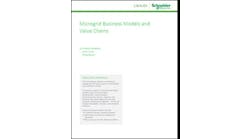Two hundred million dollars may seem a lot of money to spend on a smart grid, but for EPB, a utility in Chattanooga, the investment was well worth it, said David Wade, COO of EPB.
The company — one of the largest publicly owned electric distributors in the country, with 170,000 customers — has seen a 65 percent increase in reliability as the result of its smart grid investment, $11 million of which came from a Department of Energy grant.
EPB’s customer base is prone to outages due to stormy weather, said Wade. So a main goal of investing in the smart grid was to prevent outages –or to respond to them quickly.
EPB serves 600 square miles and has 16 different delivery points for bringing its purchased power to customers.
The company’s efforts began in 2007. “We wanted our electricity system to be intelligent, interactive and self-healing,” Wade said. The first step was installing a fiber optic network that dramatically improved the utility’s communication abilities. “That’s the backbone of the smart grid.”
The fiber optic network was designed to reduce the impact of power outages, improve response time and allow customers greater control of their electric power usage. EPB is also offering its customers high-speed internet through the network.
Before the smart grid system was implemented, all outage repair work was done manually. The company would see that customers were experiencing outages, and would send employees in a truck to see where the outage was located. They would call back into dispatch, and the company would manually re-route the power from the company’s different distribution points. “We’d open and close a switch, and bring 400 customers back on. We’d have to drive back and forth between switches,” said Wade.
Now, with the smart grid, the system is “self healing.” That means all of this happens automatically.
Avoiding prolonged outages means customers don’t lose as much product or sustain as many damages, for example. EPB estimates that because of the smart grid system, customers avoid $55 million to $60 million a year in loss-of-product and damages.
With the smart grid’s automation — and no need to drive around looking for the source of outages — the company drives 350,000 fewer miles per year. That translates to lower power purchases and environmental benefits, in addition to savings on the cost of fuel and maintenance for vehicles.
EPB is looking at community solar programs and also considering whether storage systems would be cost-effective, said Wade.
EPB’s smart grid system is the first major power distribution system to earn a Performance Excellence in Electricity Renewal (PEER) certification. This certification, from Green Business Certification, rates the overall sustainable performance of electricity delivery system design and operations. PEER is modeled after the LEED green building rating system and is a US Green Building Council’s mechanism for transforming power systems.
“Previously, terms like smart grid and smart cities have been used in abundance without any concrete definitions,” said Jamie Statter, vice president, strategic relationships for GBCI. “PEER is a rating system that allows various stakeholders to have a common language to discuss features of their energy system and puts forward a leadership standard that utilities, campuses and cities can and should build to in order to ensure reliability, resiliency, power quality and energy efficiency.”
Learn more utility smart grid and reliability by signing up for our free Energy Efficiency Markets newsletter.






